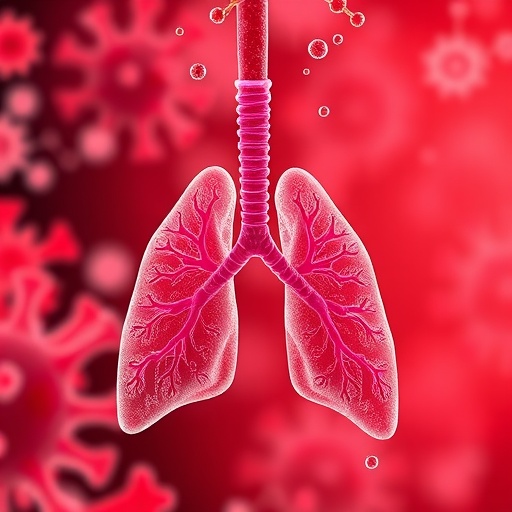Plant-based diets could curb climate change and infectious diseases, experts say – News-Medical

Report on Plant-Based Diets as a Strategy for Achieving Sustainable Development Goals
Introduction
A review by infectious disease specialists, published in Open Forum Infectious Diseases, outlines the critical role of transitioning to plant-based diets in achieving multiple Sustainable Development Goals (SDGs). The report details how current animal agriculture practices undermine global progress on health, climate, and environmental stability, while a shift in dietary patterns offers a viable solution.
Impact of Animal Agriculture on Sustainable Development
Undermining SDG 13 (Climate Action) and SDG 15 (Life on Land)
Animal agriculture is a primary driver of environmental degradation, directly conflicting with key environmental SDGs.
- Greenhouse Gas Emissions: The meat industry is responsible for nearly half of global methane emissions, significantly hindering progress on SDG 13 (Climate Action).
- Land Degradation and Deforestation: Approximately 50% of the world’s habitable land is used for agriculture, with two-thirds dedicated to livestock. This expansion, particularly for cattle farming, is the leading cause of deforestation, resulting in massive biodiversity loss and compromising SDG 15 (Life on Land).
- Unsustainable Projections: Despite its environmental impact, global meat consumption is projected to increase by 76% by 2050, further threatening climate and biodiversity targets.
Threats to SDG 3 (Good Health and Well-being)
The practices associated with industrial animal farming pose direct threats to global public health targets.
- Antimicrobial Resistance (AMR): The extensive use of antibiotics in livestock to promote growth is a major contributor to AMR, which the World Health Organization (WHO) identifies as a top global health threat. The runoff of antibiotic residues into soil and water systems exacerbates this crisis, undermining SDG 3.
- Increased Disease Transmission: Deforestation creates ecological conditions favorable for the spread of zoonotic and vector-borne diseases like malaria and dengue, increasing public health risks and challenging the objectives of SDG 3.
Plant-Based Diets: A Catalyst for Sustainable Development
Contributions to SDG 3 (Good Health and Well-being)
Adopting plant-based diets offers a powerful tool for improving public health outcomes and strengthening resilience against disease.
- Reduced Chronic Disease Burden: Plant-based diets are linked to lower risks of obesity, cardiovascular disease, and type 2 diabetes, aligning with targets for reducing non-communicable diseases under SDG 3.
- Enhanced Immune Function: Nutrients prevalent in plant-based foods, such as fiber, vitamins, and polyphenols, support immune function and reduce inflammation.
- Lower Susceptibility to Infectious Diseases: Studies indicate that individuals on plant-based diets experienced a significantly lower risk of severe COVID-19. These diets also offer anti-inflammatory benefits for people with chronic viral infections like HIV.
Addressing SDG 12 (Responsible Consumption and Production) and SDG 13 (Climate Action)
A dietary shift represents a direct intervention for promoting sustainable consumption and mitigating climate change.
- Reduced Environmental Footprint: A 25% reduction in meat consumption in the United States alone could decrease national greenhouse gas emissions by 1% annually.
- Institutional Leadership: New York City’s largest health system successfully transitioned to plant-based meals as the default, reducing its food-related carbon emissions by 36% and demonstrating a scalable model for SDG 12.
Overcoming Barriers to Advance SDG 1 (No Poverty) and SDG 10 (Reduced Inequalities)
While challenges to adoption exist, strategic interventions can ensure that the transition to plant-based diets is equitable and inclusive.
- Economic Accessibility: Contrary to common perceptions, modeling studies show that in high-income countries, sustainable plant-based diets can be 22% to 34% less expensive than current average diets, supporting the goals of SDG 1.
- Addressing Food Deserts: Limited access to healthy options in low-income communities exacerbates health disparities, a challenge to SDG 10. Policy interventions such as subsidies and support for urban farming are needed to improve access.
- Role of Healthcare Providers: Clinicians can play a crucial role in overcoming informational barriers by counseling patients on the benefits and practicality of adopting plant-based diets.
Conclusion and Recommendations
The transition toward plant-based diets is an evidence-based, multi-pronged strategy to advance the 2030 Agenda for Sustainable Development. It simultaneously addresses climate change, protects biodiversity, combats antimicrobial resistance, and improves public health. To accelerate this transition, the following actions are recommended:
- Healthcare providers, especially infectious disease specialists, should integrate dietary counseling into routine patient care to promote both individual and planetary health.
- Public and private institutions, particularly hospitals, should lead by example by adopting policies that make plant-based food options the default choice.
- Governments should implement policies that expand access to affordable and healthy plant-based foods, particularly in underserved communities, to ensure an equitable transition that supports SDG 1, SDG 2, and SDG 10.
Analysis of Sustainable Development Goals in the Article
-
Which SDGs are addressed or connected to the issues highlighted in the article?
The article highlights several interconnected issues that directly relate to multiple Sustainable Development Goals. The primary focus on the impacts of animal agriculture and the benefits of plant-based diets touches upon global health, climate change, environmental protection, and sustainable consumption.
- SDG 3: Good Health and Well-being: The article extensively discusses health risks and benefits associated with diets. It links animal agriculture to the rise of antimicrobial resistance (AMR) and infectious diseases, while connecting plant-based diets to lower risks of non-communicable diseases (NCDs) like cardiovascular disease and diabetes, and reduced susceptibility to infectious diseases like COVID-19.
- SDG 12: Responsible Consumption and Production: The core argument of the article is a call to shift consumption patterns away from meat towards plant-based foods. It critiques the current model of animal agriculture as an unsustainable production system and points to rising global meat consumption as a major challenge.
- SDG 13: Climate Action: The article explicitly identifies animal agriculture as a “significant contributor to global greenhouse gas emissions.” It mentions that the meat industry accounts for nearly half of global methane emissions and suggests that reducing meat consumption is a practical step to cut national greenhouse gas emissions.
- SDG 15: Life on Land: The environmental impact on land is a key theme. The article states that animal agriculture leads to “land degradation,” “deforestation,” and “massive biodiversity loss.” It specifies that cattle farming is a primary driver of forest loss, which in turn affects ecosystems and increases disease transmission.
- SDG 2: Zero Hunger: While not the main focus, the article touches on the sustainability of food systems. It notes that “Around half of the world’s habitable land is used for agriculture, with two-thirds of this allocated to livestock,” implying that a shift to more land-efficient plant-based diets is crucial for sustainable food production.
-
What specific targets under those SDGs can be identified based on the article’s content?
Based on the issues discussed, several specific SDG targets can be identified as directly relevant.
- Target 3.3: By 2030, end the epidemics of AIDS, tuberculosis, malaria and neglected tropical diseases and combat hepatitis, water-borne diseases and other communicable diseases. The article connects deforestation from animal agriculture to an increase in vector-borne diseases like malaria and dengue, and it discusses how plant-based diets may reduce susceptibility to infectious diseases like COVID-19, hepatitis C, and HIV-related complications.
- Target 3.4: By 2030, reduce by one third premature mortality from non-communicable diseases through prevention and treatment and promote mental health and well-being. The article states that plant-based diets are linked to “lower risks of obesity, cardiovascular disease, type 2 diabetes, and overall mortality.”
- Target 3.d: Strengthen the capacity of all countries… for early warning, risk reduction and management of national and global health risks. The article identifies antimicrobial resistance (AMR), exacerbated by antibiotic use in livestock, as a “top global health threat,” and suggests reducing meat demand as a strategy to manage this risk.
- Target 12.2: By 2030, achieve the sustainable management and efficient use of natural resources. The article critiques the inefficient use of land for animal agriculture (“two-thirds of [habitable agricultural land] is allocated to livestock”) and advocates for plant-based diets as a more sustainable alternative.
- Target 13.2: Integrate climate change measures into national policies, strategies and planning. The recommendation for “public policy reforms” to support a transition to plant-based diets aligns with integrating climate mitigation strategies into national planning.
- Target 15.2: By 2030, promote the implementation of sustainable management of all types of forests, halt deforestation, restore degraded forests and substantially increase afforestation and reforestation globally. The article directly links cattle farming to deforestation, stating it “accounted for twice as much forest loss as all other agricultural activities combined” between 2001 and 2015. Shifting away from meat consumption is presented as a way to halt this driver of deforestation.
-
Are there any indicators mentioned or implied in the article that can be used to measure progress towards the identified targets?
The article mentions or implies several quantitative and qualitative indicators that could be used to track progress.
- Greenhouse Gas Emissions from Agriculture (Indicator for SDG 13): The article provides specific data points that can be used as indicators, such as “The meat industry alone accounts for nearly half of global methane emissions.” It also suggests a direct measure of progress: “a 25% reduction in American meat intake could cut national greenhouse gas emissions by 1% annually.” The 36% reduction in food-related carbon emissions at a New York City health system is another concrete example.
- Rate of Deforestation (Indicator for SDG 15): The article implies this indicator by stating, “Between 2001 and 2015, cattle farming accounted for twice as much forest loss as all other agricultural activities combined.” Tracking the amount of forest loss attributed to agricultural expansion, particularly for livestock, would measure progress towards Target 15.2.
- Prevalence of Non-Communicable Diseases (Indicator for SDG 3): The article links diet to health outcomes, implying that indicators such as the incidence rates of “obesity, cardiovascular disease, type 2 diabetes, and overall mortality” can be used to measure the public health benefits of dietary shifts.
- Use of Antibiotics in Livestock (Indicator for SDG 3): To measure progress against AMR (Target 3.d), the volume of antibiotics used in agriculture is a key indicator. The article notes that “Most antibiotics sold in the United States are used in agriculture,” suggesting that tracking and reducing this figure is a measure of success.
- Per Capita Meat Consumption (Indicator for SDG 12): The article’s central argument is to reduce meat consumption. Therefore, tracking global and national meat consumption levels, which are “projected to rise by 76% by 2050,” serves as a primary indicator for responsible consumption.
- Sales of Plant-Based Foods (Indicator for SDG 12): The article provides a market-based indicator of shifting consumption patterns: “From 2017 to 2023, American sales of plant-based foods doubled from $4 billion to $8 billion.” This trend can be monitored to gauge the adoption of sustainable diets.
-
Create a table with three columns titled ‘SDGs, Targets and Indicators” to present the findings from analyzing the article. In this table, list the Sustainable Development Goals (SDGs), their corresponding targets, and the specific indicators identified in the article.
SDGs Targets Indicators SDG 3: Good Health and Well-being - 3.3: End epidemics of communicable diseases.
- 3.4: Reduce premature mortality from non-communicable diseases.
- 3.d: Strengthen capacity to manage global health risks.
- Incidence of vector-borne diseases (malaria, dengue).
- Severity and incidence of infectious diseases (e.g., COVID-19).
- Prevalence of obesity, cardiovascular disease, and type 2 diabetes.
- Volume of antibiotics used in livestock agriculture.
SDG 12: Responsible Consumption and Production - 12.2: Achieve sustainable management and efficient use of natural resources.
- Global and national per capita meat consumption levels.
- Market sales figures for plant-based foods.
- Percentage of agricultural land used for livestock.
SDG 13: Climate Action - 13.2: Integrate climate change measures into policies and planning.
- Percentage of greenhouse gas emissions from the agriculture/meat industry.
- Annual reduction in national GHG emissions due to dietary changes.
- Food-related carbon emissions from institutions.
SDG 15: Life on Land - 15.2: Halt deforestation and restore degraded forests.
- Rate of deforestation attributed to livestock farming (e.g., cattle ranching).
- Amount of land degradation linked to agriculture.
- Trends in biodiversity loss in agricultural zones.
Source: news-medical.net
What is Your Reaction?
 Like
0
Like
0
 Dislike
0
Dislike
0
 Love
0
Love
0
 Funny
0
Funny
0
 Angry
0
Angry
0
 Sad
0
Sad
0
 Wow
0
Wow
0



















































.jpg.webp?itok=0ZsAnae9#)


























